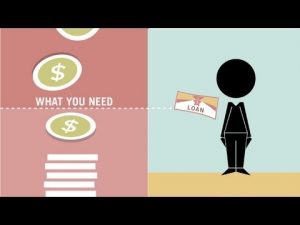Responsible Borrowing
As you make choices in how you finance your education, consider the following tips that can help you borrow responsibly:
- Plan ahead: Budget your expenses at the start of every quarter and only borrow student loans that you’ll need to pay your school-related costs.
- Look to scholarships and grants to cover the costs of higher education. Since scholarships and grants don’t have to be paid back, they’re free money to put toward the cost of your education.
- Make interest-only payments on your student loans while you’re in school to save money in the long run when you’re repaying your loans.
- Take advantage of tax benefits or incentives that are associated with your tuition and/or student loans.
- Estimate the amount of debt you can afford. Use a repayment calculator to figure how much you’ll need to make your monthly loan repayments once you graduate.
- If you are struggling to make loan payments, contact your lender. It is critical that you communicate your situation with your lender so that you can make appropriate arrangements that will protect your credit score.
- Stay on schedule. Repaying a student loan on time can create and build an excellent credit history.
- If you can prepay a student loan, do so. You won’t incur any penalties and you’ll save on the total interest due.
How Financial Aid Works
- Start Planning Early – Plan how to pay for college before you start. Ask school counselors and the college financial aid office about state, college, and nonprofit grants and scholarships you can apply for.
- Fill Out the FAFSA Form – Before each year of college, apply for federal grants, work-study, and loans with the Free Application for Federal Student Aid (FAFSA®) form.
- Review Your Aid Offer – Your aid offer explains the types and amounts of aid a college is offering you, and your expected costs for the year
- Get Your Aid – Time to go to school! Your financial aid office will apply your aid to the amount you owe your school and send you the remaining balance to spend on other college costs. One of the requirements to maintain financial aid eligibility is that you must make satisfactory academic progress. And don’t forget to complete a FAFSA® form each year!
- Graduate and Start Repayment – As you prepare to graduate, get ready to repay your student loans. Good news! Federal student loan borrowers have a six-month grace period before you begin making payments. Use this time to get organized and choose a repayment plan.
Student Guide To Responsible Borrowing
When it comes to paying for college first look for money you won’t have to pay back for instance scholarships and grants.
Scholarships
- Finding and Applying for Scholarships: https://studentaid.ed.gov/sa/types/grants-scholarships/finding-scholarships
- How to Write a Scholarship Thank You Letter: https://resume.io/blog/how-to-write-a-scholarship-thank-you-letter
- College Scholarship Guide: https://edubirdie.com/blog/college-scholarship-guide
-
- Access Scholarships: Scholarship search tool
- Best Colleges: Scholarships for Computer Science Majors
- Best Colleges – Scholarships for Nursing Students
- Boom and Bucket: https://www.boomandbucket.com/blog/scholarship
- CollegeAve Student Loan Scholarship
- College Scholarships (Chamber of Commerce): https://www.chamberofcommerce.org/best-college-scholarships
- College Scholarships (MoneysavingPro): https://www.moneysavingpro.com/blog/ultimate-guide-to-college-scholarships/
- Degree Choice: Scholarships for college students
- DetoxRehabs.net Scholarship Essay Contest: https://www.detoxrehabs.net/annual-scholarship/
- Drug Rehab USA Mental Scholarship – The Drug Rehab USA Mental Scholarship is open to students enrolled in any mental health degree program, including but not limited to psychology, counseling, social work, psychiatric nursing, and other related fields. Applicants must be committed to making a difference in the field of mental health and demonstrate a passion for improving the lives of others
- Education Loan Finance: https://www.elfi.com/how-to-get-a-scholarship/
- Fastweb – Once you complete your profile you’ll have access to Fastweb’s database of more than 1.5 million scholarships.
- Florin|Roebig Scholarship: Scholarship 2023 Essay Contest
- Georgetown University: Scholarships and Grants for Nursing Students
- MBA Scholarships – Search for general MBA Scholarships, MBA Scholarships for Minorities, Women and Military
- Military MBA scholarships
- Nitro – Scholarships for Graduate Students
- NursingExam.org –
- Online Master’s Degree – Best Scholarships for Master’s Degree Programs
- OnlineMBA: MBA minority scholarships
- Personal Finance Analyst (PFA) – Search through hundreds of scholarships from across the world. Whether you are a high school student, undergraduate student or graduate student, there are scholarships for you.
- phds.me: Scholarships and Financing Options for Minority Doctoral Students
- Psychology Scholarships: https://www.onlinepsychologydegrees.com/psychology-scholarships/
- Purdue University Global: 45+ College Scholarships for Minority Students
- SallieMae Scholarship Search
- SallieMae Graduate School Scholarship Search
- Scholarships & Online Resources for Psychology Students: https://www.edumed.org/online-schools/psychology-degrees/scholarships-and-resources/
- Scholarships for Psychology Majors: https://www.psychology.org/scholarships/
- Study.com: Student Scholarships (Deadline Sept. 1, 2022)
- College Scholarships for High School Seniors (Deadline Sept. 1, 2022)
- Scholarships for Students in Wisconsin (Deadline Sept. 1, 2022)
- Teach.com: 2021 MBA Scholarships Guide
- TExEStest.org: TExEStest.org Future Teacher Scholarship
- Going Merry Scholarship Search – Wisconsin
Grants
- Many grants for college are need-based. Need-based grants are awarded based on your family’s economic situation. To figure out your financial need, most schools consider your Free Application for Federal Student Aid (FAFSA) and Expected Family Contribution (EFC). Your EFC is a number used by your school to calculate how much financial aid you are eligible to receive.
- There are merit-based college grants, too. Merit-based grants are awarded to students who demonstrate high levels of academic achievement, a commitment to community service, or excellent leadership skills. To find merit-based grants for college, start by doing an online search for college grants in your home state.
Once you’ve looked for scholarships and grants then explore federal student loans and finally consider a responsible private student loan or federal parent PLUS loan to cover the rest. When borrowing students and families should evaluate all anticipated monthly loan payments, and how much the student expects to earn in the future, before considering a private student loan.
If it is determined that borrowing beyond the amount in your award is necessary, borrow only what you need and not what you desire. Remember, you have four years of undergraduate schooling. Pace yourself. You are expected to repay your loan plus interest. Repaying your loan on time will help you establish a good credit rating. It is also very important that you avoid all forms of credit card debt. Acquiring credit card debt is not necessary to establish a good credit rating, and it may be detrimental to your financial health.
Explore your anticipated career and the typical first-year salary for that profession. While not a steadfast rule, consensus is that the monthly repayment of all undergraduate loans should not exceed eight percent of future gross monthly income. At a debt level of $20,000, your yearly future gross income should be around $32,000 to be within these guidelines. The financial aid office and student accounts can assist you in loan counseling.
For information about Wisconsin’s GI Bill, Federal GI Bill and other grant opportunities for Veterans please visit the State of Wisconsin Department of Veterans Affairs (DVA): Providing education benefits to those who have served, as well as to their family members.
Types of Student loans
There are three types of student loans: federal loans, private loans and refinance loans once you leave school.
To get federal loans, you must fill out the Free Application for Federal Student Aid, known as the FAFSA. You can apply for private or refinance loans directly with the bank or financial institution you want to borrow from.
The right loan is key to taking on no more student loan debt than is necessary.
The Beginner’s Guide to the FAFSA
Understanding the different types of student loans and how they work
Types of federal student loans
The federal government provides these loans, and Congress sets the interest rates each year. They come with useful protections like the ability to tie payments to income when you graduate or get loans forgiven if you work in a public service field.
Most federal loans don’t require a co-signer or good credit; nearly every student with a high school diploma is eligible to receive them. You just need to fill out the FAFSA, to apply.
There are four different types of Federal student loans,
1) Direct Subsidized Loans
2) Direct Unsubsidized loans
3) Direct PLUS Loans and
4) Direct Consolidation Loans.
You can learn more about all of them here: https://studentaid.ed.gov/sa/types/loans
Types of private student loans
After exploring federal student loan options private student loans can be a good option for some borrowers, such as students who’ve borrowed the maximum amount of federal loans and still need money.
Banks and other financial institutions make private loans to students. When you apply for private loans, the lender will want to see proof you can repay it, usually in the form of a good credit score. A co-signer can help you qualify; that person will be responsible for the loan if you can’t pay it back.
With so many options, it’s important to compare interest rates, fees and borrower protections before you choose a lender.
Types of student loan refinancing
After you graduate and have shown responsible payment history, you may be able to refinance student loans. That’s when a private lender pays off your loans and gives you a new repayment schedule and lower interest rate. Generally, you need a credit score of 690 or higher to refinance. You’ll lose federal loan protections if you include federal loans in the package. Be sure to weigh your options before refinancing a Federal Student Loan because you will lose your benefits that come with a Federal loan.
Read a blog on: Everything you need to Know about Loan Consolidation and Student Loan Forgiveness
Student Loan Refinancing: 9 Best Student Loan Refinance Companies of 2021
Best Colleges: The Student’s Guide to College Loans
Decide how much to borrow
Create a plan for borrowing and repaying
Personalize your plan.
Create a plan to pay for college that tracks scholarships, grants, and other funds.
There are different college planning calculators available for you to use to determine your expected monthly student loan payments. Save your plan so you can make updates any time.
Sallie Mae has one called the College Planning CalculatorSM as well as a College Cost Calculator:
There is also the college savings calculator from Saving for College: https://www.savingforcollege.com/calculators/college-savings-calculator and College Affordability Calculator from affordable colleges.
You can use other calculators that are listed on our resources page.
Estimate how much you need to borrow for the entire school year
You can estimate your expenses for the entire school year. To help determine your expenses, check your financial aid award letter, which contains your school’s cost of attendance. The cost of attendance is your school’s estimate of certain expenses.
It may include:
- tuition
- fees
- housing and meals
- books and supplies
- travel
- miscellaneous expenses such as a laptop
Depending on the type of your loan, your school may certify your loan amount so you don’t borrow more than the cost of attendance. Manage your debt effectively by only having to take out a single loan. This eliminates the need for a second credit check and also reduces the number of loans you have to manage once you finish school.
Borrow only for the cost of tuition and related expenses.
Subtract any money you have received from scholarships, grants, work-study, and federal loans, along with any savings you or your family have for school. Then you’ll be left with the amount you still need to pay for college.
Creating a monthly budget will help you decide how much to borrow as well. Monthly budget worksheet from Sallie Mae. There are other worksheets available as well you could use.
Also, think about your post-college lifestyle. Only borrow what you can afford to pay back. Visit the U.S Department of Labor’s website for estimated salaries by occupation.
Always evaluate your financial aid offer carefully
College students, watch for your school’s financial aid offer explaining your specific individual cost for college.
When will you get your financial aid offer?
Most schools send out financial aid offer around the same time as their acceptance letters. The timing can vary, however, depending on things like when you submitted your FAFSA and how many FAFSAs the school received. If you have questions about when you can expect your award letter, call your school’s financial aid office.
Keep in mind, your offer letter covers one year only, so you will get a new award letter every year. And that means you’ll need to fill out the FAFSA and apply for financial aid annually while you’re in school.
What’s in a financial aid offer?
Financial aid offers usually contain this information:
- Cost of attendance (COA), an estimate of what you can expect to pay for one year of school. This includes tuition and fees, room and board, books and supplies, transportation, and even personal expenses.2 If the COA isn’t included in your letter, check the school’s website or call the financial aid office.
- Expected Family Contribution (EFC), a number that your school uses to determine how much financial aid you’re eligible for. It’s not (despite its name) how much your family will have to pay for college.3
- College grants are typically need-based and can be given by state or federal governments.
- College scholarships can be need-, merit-, or interest-based and are awarded by a school, company, or private organization.
- Federal work-study is a program, implemented by the school, where you work to earn your financial aid.
- Federal student loans let you borrow money directly from the federal government; you pay this financial aid back with interest. A financial aid award letter may also list the amount you can borrow with a credit-based loan (like a federal Direct PLUS Loan or a private student loan).
Here are three examples of the offers that are sent to the students:
- University of Wisconsin-Madison sample letter
- University of Wisconsin-River Falls sample letter
- Other Sample School letter
Explore other sources of aid, such as grants, scholarships, and work-study programs that do not require repayment.
On March 28, 2016 the state enacted Wisconsin Act 284, which requires Wisconsin institutions of higher education to annually provide a letter to all students to inform them of the cost of their education. The letter is required to include specific information about each loan held by a student, including total amount of debt accrued under the loan, the interest rate, standard repayment terms, the estimated monthly payment due under the loan when the repayment period commences, and the amount of interest to be paid over the term of the loan. This information can be a valuable resource to help students plan their financial futures upon graduation. Click for more information on the Wisconsin Student Debt Letter Legislation
What affects your total student loan cost
Aside from the amount you borrowed, other factors can increase the total cost of your student loan in the long run.
How interest on private student loans works
When you apply for a loan, you’ll be given an interest rate, which is the rate charged to borrow money.
When you borrow money, you pay it back with interest, so you end up paying back more than you borrowed.
Interest starts to accrue (grow) the day your student loan funds are disbursed (sent to your school).
Other factors that could affect your total student loan cost
Late fees
Loan servicers may charge a fee if a payment is late. To help avoid late payments, set up auto debit. Your payments will be automatically deducted from your bank account at the same time every month. Just make sure you have enough money in your account each month to cover your payments.
Payment-related fees
Loan servicers may charge a fee for returned checks or insufficient funds in your bank account.
Variable interest rates
Variable interest rates may go up or down due to an increase or decrease to the loan’s index. This may impact your monthly payments and total student loan cost. If you’re looking for predictable monthly payments, consider a fixed interest rate. But keep in mind that you could have higher monthly payments with a fixed interest rate than you would with a variable interest rate.
How you choose to repay your loan
If you choose a loan that does not require you to make payments while you’re in school, interest will keep adding up and will increase your total student loan cost. Choosing a repayment option where you make payments while in school will help reduce your total student loan cost.
Deferment and forbearance
A deferment allows you to temporarily suspend payments on your student loan under certain circumstances, which may include going back to school, or enrolling in an internship or residency program. Keep in mind that while in deferment, interest may keep adding up and increase your total student loan cost.
Forbearance may let you temporarily postpone your loan payments. It can help you avoid delinquency and default if you’re facing temporary financial difficulty. While you’re in forbearance, you may not have to make payments. However, interest may continue to accrue. At the end of your forbearance period, the interest may capitalize (be added to your loan’s principal), so your total loan cost may increase.
Graduate with less student loan debt
 Graduating from college with less student loan debt is possible. The keys are to understand how your loan-related choices will affect your total student loan cost and to stay current with your monthly student loan payments.
Graduating from college with less student loan debt is possible. The keys are to understand how your loan-related choices will affect your total student loan cost and to stay current with your monthly student loan payments.
5 tips for graduating with less student loan debt
Choose your college with cost in mind.
How America Pays for College shows that 4 out of 5 students attend college in their home state to lower the cost of college. Some students save money by starting out at a community college and some look for schools where they can earn a degree in less time than usual.
Make student loan payments while you’re in school.
Interest starts adding up the day your funds are disbursed (sent) to the school. Depending on your loan, you may be able to choose a repayment option where you make payments while you’re in school, which may help you reduce your total loan cost. Choosing an in-school repayment option may also qualify you for a lower interest rate.
Make extra payments when you can.
Lenders do not penalize borrowers for making extra payments or paying early. If you choose to defer your student loan payments, you can still make payments any time without penalty. Again, this will help lower the total cost of your student loan.
Look for interest rate reductions.
Lenders may offer a student loan interest rate reduction for enrolling in auto debit. This means your payments are automatically deducted from your bank account each month. You can save money on your student loan and you won’t have to worry about being late with your payments.
Don’t pass up part-time work.
Work-study is generally a flexible on-campus way to earn money. And many career services offices can help students find part-time jobs in their field—an experience that could help you land a job after graduation.
Debunking financial aid myths
Myth: My family’s income is too high to qualify for federal financial aid.
Fact: Student and family income isn’t the only factor that the government uses to decide if a student qualifies for federal financial aid. The only way to know for sure if you’ll qualify is to fill out the FAFSA.
Myth: My family has money saved for college so we won’t get any federal financial aid.
Fact: Savings might not be a major factor when a school decides if a student qualifies for Federal Direct Unsubsidized Loans. There are allowances for savings and assets.
Myth: My sibling wasn’t eligible for much federal financial aid last year, so I won’t be eligible when I enter college.
Fact: Actually, the number of family members in college might have a favorable impact on your financial aid eligibility.
Myth: I’m only attending college part-time, so I won’t be eligible for federal financial aid.
Fact: Financial aid is available for part-time students. Talk to the financial aid offices of the colleges you’re interested in attending about aid for part-time students.
Student Loan Debt Relief Scams
Student Loan Debt Relief Scams
Paying back student loans can be overwhelming. So-called student loan debt relief companies promise to defer, lower, consolidate, or eliminate federal student debt, but end up costing you more money and may not reduce your federal student loan debt at all. These companies typically just offer services you can get for free from the federal government or your loan servicer. And often these companies are just fraudsters who are after your money. It is important to know the signs of a scam.
There is nothing a student loan debt relief company can do for you that you cannot do yourself for free.
For more information about Student Loan Debt Relief Scams visit the Department of Agriculture, Trade and Consumer Protection.



